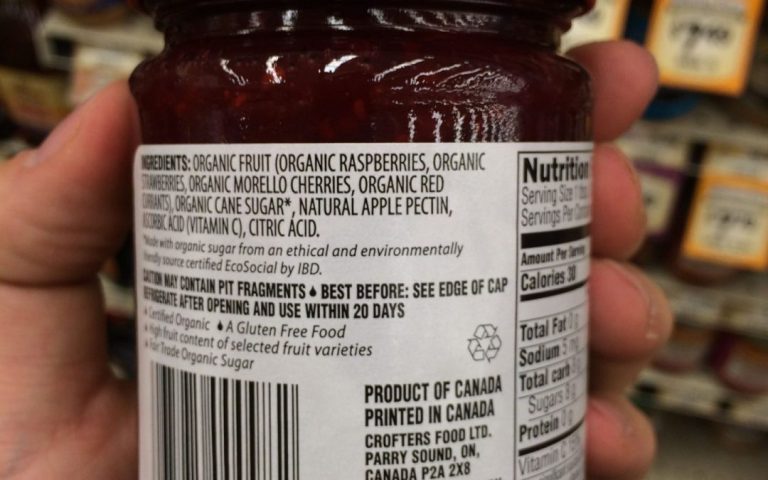
The label is the “identification card” of the product, giving us useful information regarding its composition, quantity of its constituents, its validity and other relevant characteristics.
There is sometimes a lot of misleading information that only serves to deceive the most inattentive or misinformed consumers. Information such as: “no cholesterol” in plant products (there is only cholesterol in animal products); Enriched in fiber (but with equally low amounts); Light; etc. However, it is possible to obtain some relevant information so that we can make the best choices:
List of ingredients – They always appear in descending order of quantity. The 1st of the list is the one that is in greater quantity. Generally, the bigger the list, the worse. Especially if you have additives like dyes, flavorings, sweeteners, preservatives, etc.;
Quantity of calories – The calories we eat play a key role in controlling and losing weight. The calories per 100g of product are useful to compare with other alternatives;
Carbohydrates – They are the greatest source of energy, so it is necessary to pay attention to the amount that we ingest. But more important than that is the quality of them. Avoid those who have large amounts of simple carbohydrates, as well as causing peaks of glycemia, they are also quickly absorbed (part of them are absorbed in the mouth), still bring us other health hazards (usually are very refined products). The more complex the starch, the better. They are satiated for longer without high glycemic peaks;
Fats – Pay attention to the amount of saturated, monounsaturated and polyunsaturated fats. Let’s avoid saturated ones because they are the least beneficial for us;
Fibers – In general, the more fibers the food has, the better. Foods that advertise to be rich in fiber, should have values above 9g per 100g. Unfortunately, most of the added fibers are artificial with names like inulin, polydextrose, and maltodextrin that do not have the same benefits as those consumed in natural fiber-rich foods like fruits, vegetables, and whole grains;
Shelf life – Let us always distrust food with a very long validity. Generally for the flavor and texture to be maintained for a long time, trans or hydrogenated fats are used for this purpose. They are highly harmful to our health;
Omega 3 – Be very careful with products enriched with omega 3. These fats are very delicate and oxidize very easily making them rancid and harmful. It is preferable to eat fresh foods rich in omega3 like fish and seeds;
Take care of foods that claim to be healthier but use wheat flours (non-integral “white” flour), and “natural” sweeteners like corn syrup;
Again, if we want to ensure good nutrition, it is important to avoid anything that is prepackaged and pre-cooked. Buying raw, fresh foods and cooking them at home is the best option. Our health will thank you… A LOT!
4elements retreat
At 4elements you can enjoy your retreat in small groups, in a comfortable house with 5 private en-suite rooms, a beautiful garden, an extensive farm full of diversity and wonderful surroundings.
Our Contacts
Rua António Franco Nº 1, Póvoa de Penafirme, 2560-046 A-dos-Cunhados, Portugal
Our Retreats
Other Pages
© 2021 Copyright Elements Portugal | Design by B&B Anja Baer
